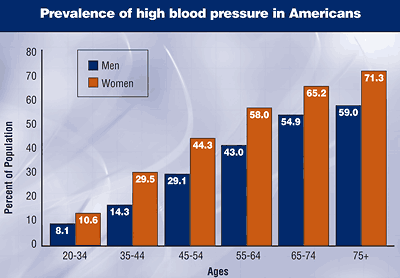Hypertension control efforts need to focus on women
Women are at higher risk for hypertension but tend to be less well-controlled.
Hypertension control efforts need to focus on women, Henry Black, MD, Rush Presbyterian St. Luke’s Medical Center, said at the American Heart Association Scientific Sessions 2004.
“For every age and ethnic group, men have better control rates than women with hypertension,” Black said. “The target needs to be on women. We have to train our patients not to walk out of the office unless they ask their provider why he or she is allowing them to go home with their blood pressure too high.”
Black said some progress has been made, according to reports from the National Health and Examination Survey (NHANES), a publication of the Centers for Disease Control and Prevention. According to NHANES IV, which covered 1999-2000, 70% of Americans with hypertension are aware of it and 33% of Americans are at goal.
Black said this was an improvement over NHANES II (1976-1980) where 50% of hypertensive Americans were aware they had the condition, 31% were treated and only 10% were controlled. “So we have made some progress,” Black said.
Unfortunately, while control rates were 40% in men they were only 30% in women. “So even though women are affected by the complications of hypertension, we are still not being as aggressive as we ought to be,” Black said.
|
|
Treatment targets
Black said treating hypertension is associated with a reduction in stroke, which is about 18% of all cardiovascular diseases. “We’ve got to pay more attention to stroke than we usually do, and when we’re talking about stroke prevention we’re talking about treating hypertension,” Black said. Reducing systolic blood pressure by 2 mm Hg will reduce stroke risk by 10%, Black said.
Black women are far more likely to have hypertension than white women or even black men, Black said, and the risk of hypertension increases with age. “If you make it to age 55 or 65 and you are not hypertensive, the likelihood that you will be in 20 years is about 90%. No one will escape this problem,” Black said.
Results from ALLHAT (The Antihypertensive and Lipid-Lowering Treatment to Prevent Heart Attack Trial) showed that women, who made up about 15,000 participants in the 33,000 patient cohort, had similar benefits from medications as men.
“There were no differences in results comparing the diuretic to the calcium antagonist, and the same for the ACE inhibitor. There was some suggestion of difference among other drugs, but nothing statistically significant,” Black said.
However, women tended to have worse blood pressure overall because of physician practices. “When we look at who was assigned two drugs or more, men were more likely to be assigned two drugs, compared to women,” Black said. “By definition, women were not treated as aggressively. So it’s not just what we do in the ER when it comes to acute coronary syndromes; it’s how aggressive we are at treating hypertension.” – by Jeremy Moore
For more information:
- Black HR. Gender trends in hypertension control and stroke. Presented at the American Heart Association Scientific Sessions 2004. Nov. 7-10, 2004. New Orleans.

